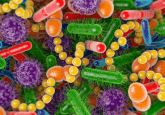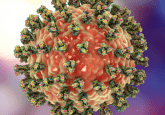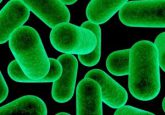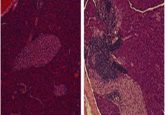Small weight fluctuations change the body’s molecular profile

Indulging for a month has dramatic effects, impacting the microbiome, heart function, immunity, and gene expression. Can weight loss reverse these alterations?

With the holidays solidly behind us and a new year in full swing, many of us renewed our commitment to improve our dietary habits—or at least to mitigate the damage of a recent short-term indulgence. Now, timely research from Stanford University just characterized the repercussions of 30-day weight gain in striking molecular detail, highlighting effects on the microbiome along with immunity, cardiovascular markers, and insulin resistance.
By converging multiple -omics strategies (genomics, transcriptomics, proteomics assays, metabolomics, and microbiomics), the study team made billions of measurements and discovered that minimal weight gain prompted major biochemical changes. As bacterial populations morphed, molecular pathways linked to heart disease activated, and immune responses and inflammation flared. But, when participants lost weight, most body systems recalibrated back to their original states.
“This weight gain is probably equivalent to what happens to many people over Christmas break,” said geneticist and co-senior author Michael Snyder. “Thus, our study is highly relevant, showing in incredible detail what happens when people gain and lose weight and how that differs between insulin-sensitive and insulin-resistant folks.”
The study included 23 participants with BMIs ranging between mildly overweight and obese: 13 were insulin-resistant, and 10 were insulin-sensitive. After identifying baseline differences between insulin-resistant and insulin-sensitive participants, the team pinpointed a discrepancy: only insulin-resistant participants had inflammatory markers in the bloodstream. Since inflammation is a known concern in those with diabetes, Snyder’s team suspects that this type of early -omics profiling could flag early risk.
Next, the researchers offered a high-calorie diet to both groups. After 30 days, participants gained an average of 6.5 pounds each. This modest weight gain shifted their -omics profiles, spiking inflammatory markers in all participants. Among insulin-sensitive participants, Akkermansia muciniphila microbes—which protect against insulin resistance—boomed. For Snyder, the most striking change involved a shift in gene expression associated with increased risk for dilated cardiomyopathy, a type of heart failure.
“Luckily, all these biochemical changes did reverse, so that’s good news if you’ve gained weight for a short period,” Snyder said. As soon as participants lost the excess pounds, microbes and gene-expression associated with lipid metabolism and inflammation bounced back to baseline. But a few shifts in protein and molecule production persisted post-weight loss, including biomolecules linked to folate metabolism and branched-chain amino acid degradation.
“Incorporating multiple -omics layers provides a full picture of disease progression,” commented molecular biologist Markus Raiser at The Francis Crick Institute, who wasn’t involved in Snyder’s study. “This allows us to fine-tune any diagnosis, detect problems earlier, and tailor treatment in a personalized fashion.”
At present, these approaches are too complex to be applied outside a research setting. “Multi-omics experiments will need to become simpler and more robust before we can apply them to healthcare,” Raiser noted. “I’m confident that this is achievable, and Snyder’s study helps stimulate research in this important direction.”





